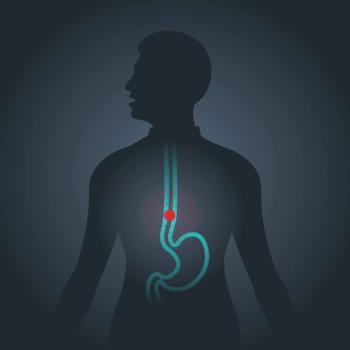
Oncology NEWS International
- Oncology NEWS International Vol 11 No 3
- Volume 11
- Issue 3
Quantitative RT-PCR Detects Nodal Micrometastases in Esophageal Cancer
SAN DIEGO-A new rapid technique for quantitative reverse transcription-polymerase chain reaction (QRT-PCR) detects nodal micrometastases in esophageal cancer patients intraoperatively and predicts disease recurrence. The technique is quicker and perhaps more accurate than intraoperative histology, making it useful in determining the need for neoadjuvant therapy in some types of cancer.
SAN DIEGOA new rapid technique for quantitative reverse transcription-polymerasechain reaction (QRT-PCR) detects nodal micrometastases in esophageal cancerpatients intraoperatively and predicts disease recurrence. The technique isquicker and perhaps more accurate than intraoperative histology, making ituseful in determining the need for neoadjuvant therapy in some types of cancer.
Investigators from the University of Pittsburgh Cancer Institute presented data at the 81st Annual Meeting of the American Association for Thoracic Surgery describing the new technique and its benefits.
The incidence of esophageal adenocarcinoma is increasing faster than that of any other solid tumor, said Tony E. Godfrey, PhD, assistant professor of surgery. Overall 5-year survival rates for this disease are only 10% to 13%, rising only to 50% to 70% in early-stage, lymph-node-negative patients.
More accurate methods are required to predict disease recurrences and allow appropriate treatment allocation, as there may be a survival benefit for node-positive patients who receive neoadjuvant therapy, Dr. Godfrey said.
RT-PCR successfully detects micro-metastases, but has limitations, including false-positive findings and low specificity. The researchers believed that a quantitative analysis could improve the correlation with disease recurrence.
The research objective was to develop and evaluate a rapid technique for quantitative RT-PCR staging of lymph nodes that could be performed intraoperatively within 30 minutes.
The approach utilizes a new quantitative thermocycler (SmartCycler, Cepheid, Sunnyvale, California) capable of fast cycling, combined with rapid RNA isolation, and a sensitive one-tube RT-PCR procedure, developed in the Pittsburgh laboratory (see photograph below).
The method was validated by comparing the results with those using the PE Biosystems 7700 (TaqMan) QRT-PCR. The two methods yielded nearly identical sensitivity and specificity.
Prospective Study
In a prospective study, 37 fresh-frozen periesophageal lymph nodes from 23 patients (12 with cancer and 11 with no cancer who served as controls) were studied by rapid QRT-PCR.
In the 12 cancer patients, 10 nodes (4 patients) were histologically positive (N1) and 16 nodes (8 patients) were node-negative (N0) by intraoperative frozen section histology. Postoperatively, 2 of the 8 patients with intraoperative frozen section N0 disease were determined to be positive by fixed tissue examination and were upstaged to N1.
Rapid QRT-PCR found high levels of carcinoembryonic antigen (CEA) expression in all histologically N1 nodes and in the nodes from both N1 patients who were N0 by frozen section.
Of the remaining 6 patients with N0 disease, one T2N0 patient had 1 of 3 nodes with a positive QRT-PCR CEA signal. This patient suffered disease recurrence 16.5 months after surgery. All other histologically N0 patients had CEA expression levels similar to control nodes.
In sum, rapid intraoperative QRT-PCR was consistently positive in all nodes that were histologically N1 by frozen section and correctly identified evidence of N1 disease in 2 patients with N0 disease by frozen section who were ultimately proven by permanent histology to have N1 disease (Godfrey TE, Raja S, Finkelstein SD, et al: Quantitative RT-PCR predicts disease recurrence in lymph node-negative esophagus cancer patients. Clin Cancer Res 7:4041-4048, 2001).
Thus, rapid QRT-PCR may be superior to intraoperative histology for determining patients who should receive neoadjuvant therapy, Dr. Godfrey told ONI in an interview.
"This method has the ability to detect micrometastases better and to potentially affect survival. You can stage patients intraoperatively, and if you find positive nodes at that time, you can start neoadjuvant chemotherapy before surgical resection," he said.
Dr. Godfrey added, "The technique may be applied in any cancer in which nodal status influences the choice of treatment, for example, in breast cancer or melanoma where nodal status determines the extent of surgical resection."
Retrospective Analysis
In a separate study presented at the 92nd Annual Meeting of the American Association for Cancer Research (AACR) in New Orleans, retrospective analysis of archived tissue showed that QRT/PCR can detect and quantitate differences in CEA expression in node-negative patients and thus predict recurrence (Raja S, Luketich JD, Kelly LA, et al: Rapid, quantitative RT-PCR: Application to intraoperative molecular detection of occult metastases in esophagus cancer. J Thorac Cardiovasc Surg, in press).
CEA expression was analyzed in 140 tissue blocks containing lymph nodes from 30 N0 patients who underwent potentially curative resection for esophageal cancer. The histologically negative lymph nodes revealed a significantly higher level of CEA expression in cancer patients who recurred vs those who did not, Dr. Godfrey said.
The results from the highest CEA-expressing block from each patient showed that sensitivity and specificity for predicting disease recurrence were both 90%, he said.
The Kaplan Meier 3-year disease-free survival of patients who were positive by quantitative RT-PCR analysis was significantly lower than that for patients who were negative, 27% vs 94% (P < .0001), Dr. Godfrey said. The overall survival was about 10% for positive patients and 45% for negative patients (P < .0006), the study found.
Articles in this issue
almost 24 years ago
Bush to Complete 5-Year Doubling of NIH Budgetalmost 24 years ago
CAD Accurate in Digital Imagesalmost 24 years ago
Campath-1H Safe and Effective in Refractory B-CLLalmost 24 years ago
Involved-Field RT Is Effective in Hodgkin’s Diseasealmost 24 years ago
FDA Approves Orfadin for Hereditary Tyrosinemia Type 1almost 24 years ago
Allovectin-7 Immunotherapy Active in Metastatic Melanomaalmost 24 years ago
HAART Ups Survival in Primary CNS Lymphoma Patientsalmost 24 years ago
DX-8951f/Gemcitabine Safe, Active in Advanced Solid Tumorsalmost 24 years ago
Pseudomonas aeruginosa Infections After Transplant Rare But Deadlyalmost 24 years ago
ODAC Recommends That FDA Approve Zometa for Bone MetastasesNewsletter
Stay up to date on recent advances in the multidisciplinary approach to cancer.
















































































